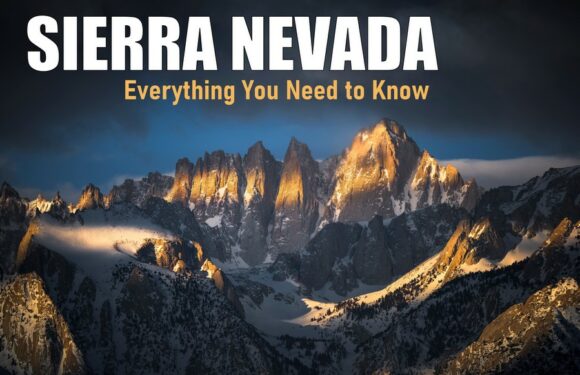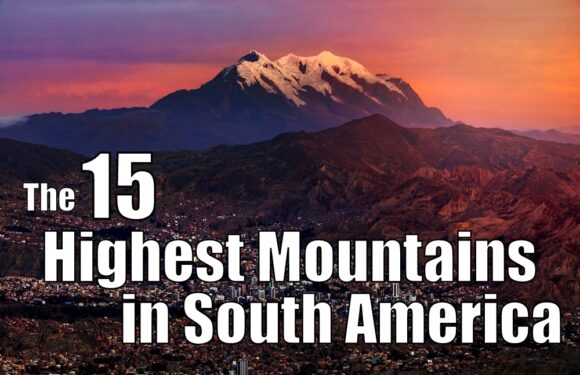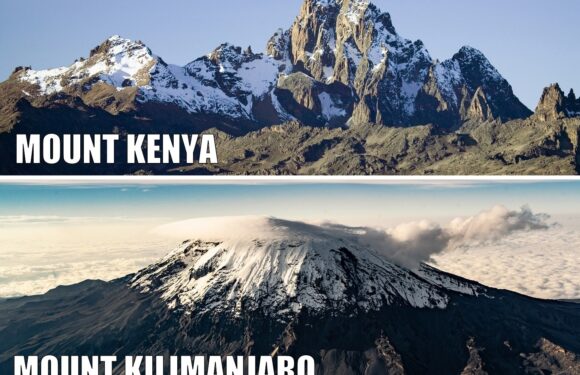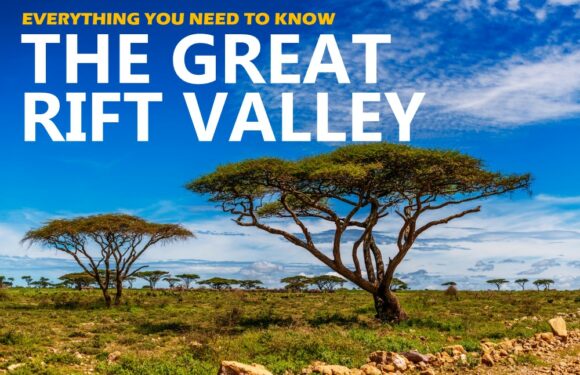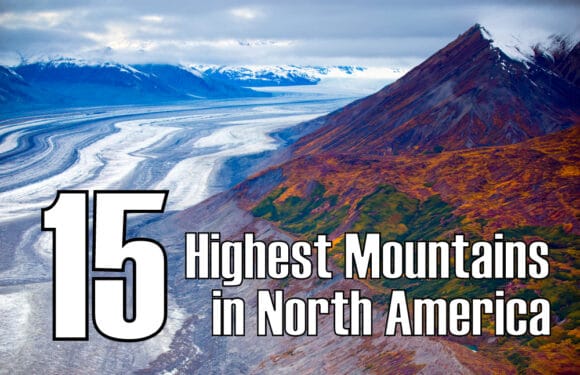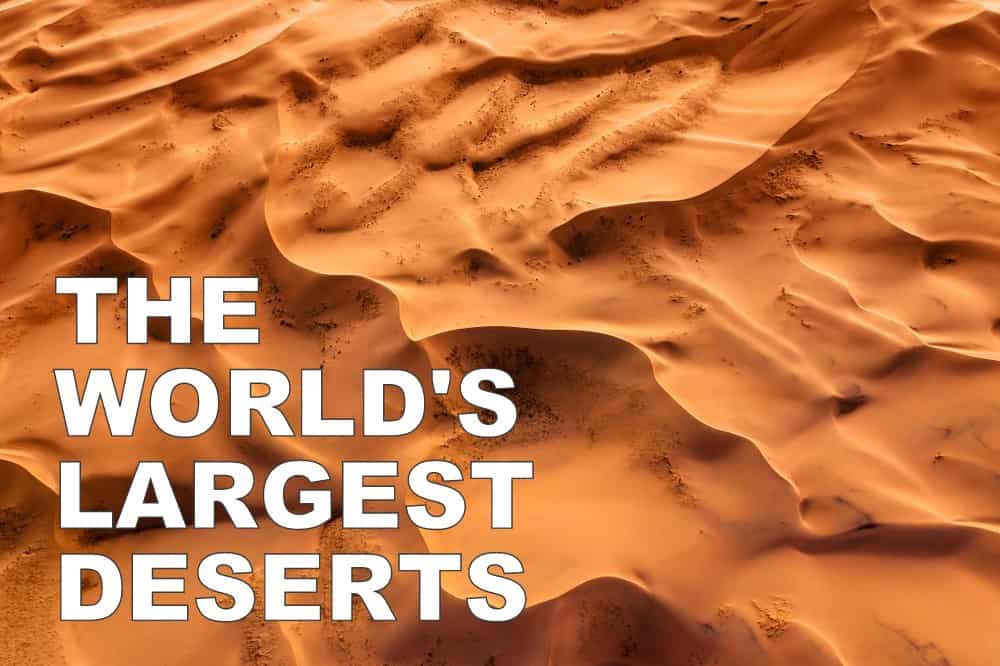
Deserts are often envisioned as wide, open stretches of sand under a blistering sun. But in reality, they are much more diverse. Deserts span across every continent, presenting a variety of climates and ecosystems.
This article explores what constitutes a desert and lists the 10 largest deserts on our planet.
What is a Desert?
At its core, a desert is defined by dryness. These are lands where precipitation is scarce, receiving less than 10 inches (25 centimeters) of rainfall per year. However, aridity alone does not encapsulate the full essence of a desert. The amount of evaporation in a desert often surpasses the annual rainfall, contributing to the lack of water.
Deserts can be broadly categorized into four main types, based on their geographical features, climatic conditions, and the causes behind their aridity.
Hot and Dry (Subtropical) Deserts
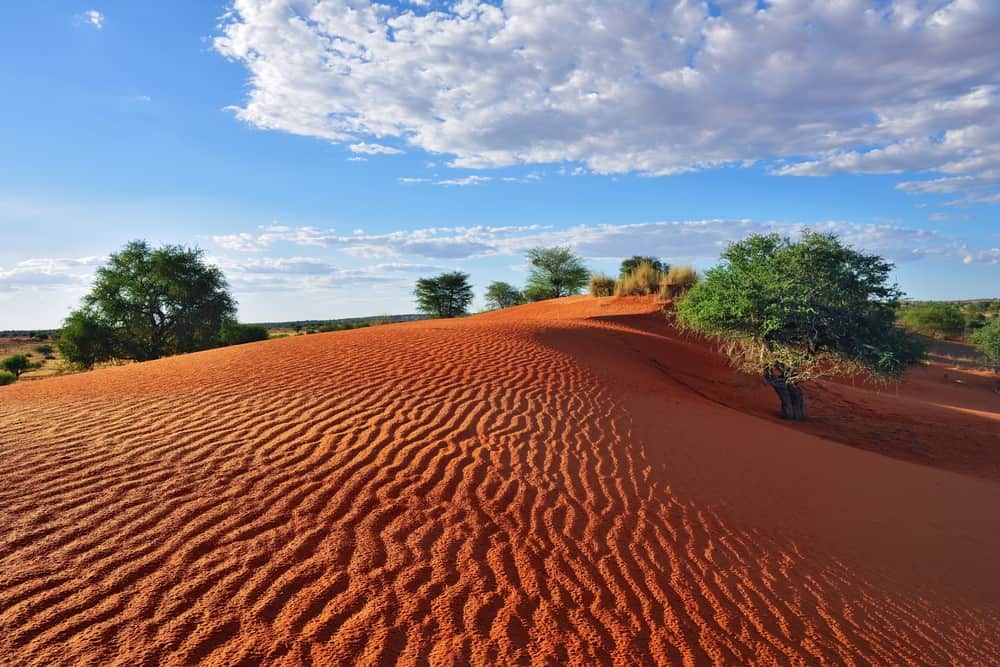
This is the quintessential desert— hot, dry and sandy. Typically located in subtropical zones where high pressure and descending air masses lead to dry conditions, prime examples include the Sahara, Arabian, and Kalahari deserts. They are characterized by extreme temperatures and sparse vegetation. While the heat soars in the daytime, nights that can be surprisingly cool. The plants and animals are adapted to the intense heat and scarcity of water.
Semi-Arid Deserts
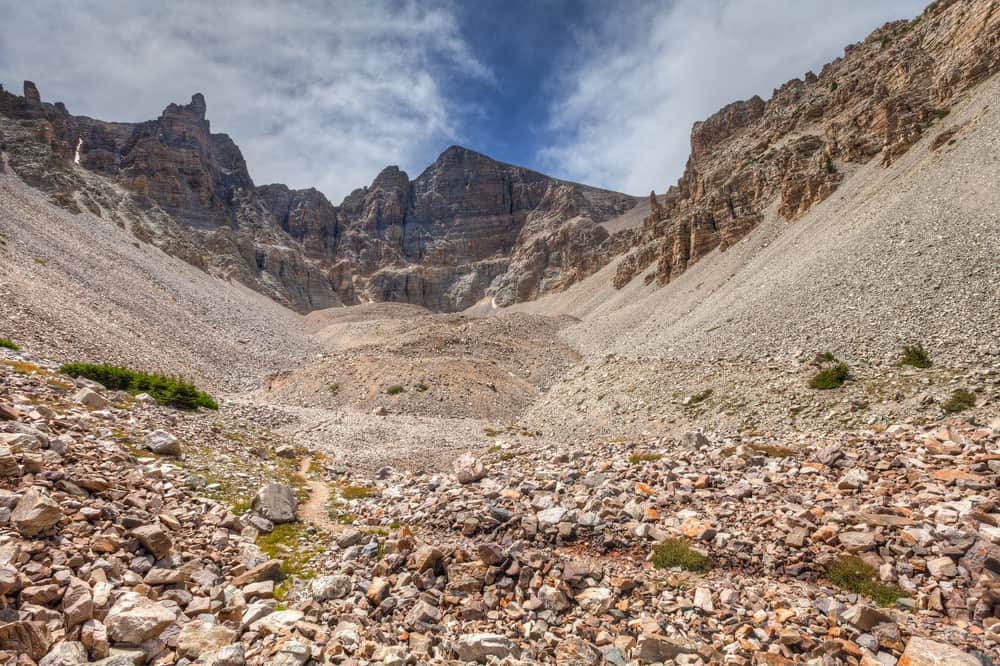
Semi-arid deserts, or steppe deserts, serve as transitional zones between hot deserts and more humid environments. They receive slightly more precipitation than their hotter counterparts, receiving an average of 10-20 inches (25-50 cm) of rain each year, which supports a greater variety of life. North America’s Great Basin and the Eurasian steppes are examples of semi-arid deserts.
Coastal Deserts
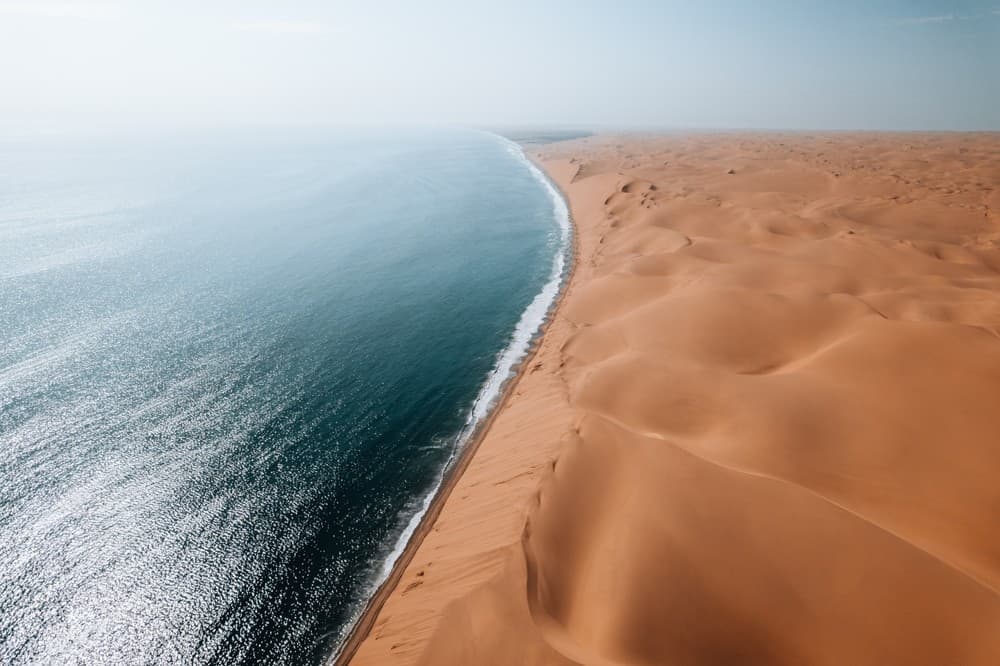
Coastal deserts are found in regions where cold ocean currents run parallel to the coast, cooling the air and decreasing its ability to hold moisture. This phenomenon limits cloud formation and reduces rainfall. The Namib Desert in Africa is a coastal desert, where its sand dunes meet the Atlantic Ocean. Coastal deserts are cooler than subtropical deserts. Their fog and dew are crucial sources of moisture for the ecosystem.
Cold Deserts
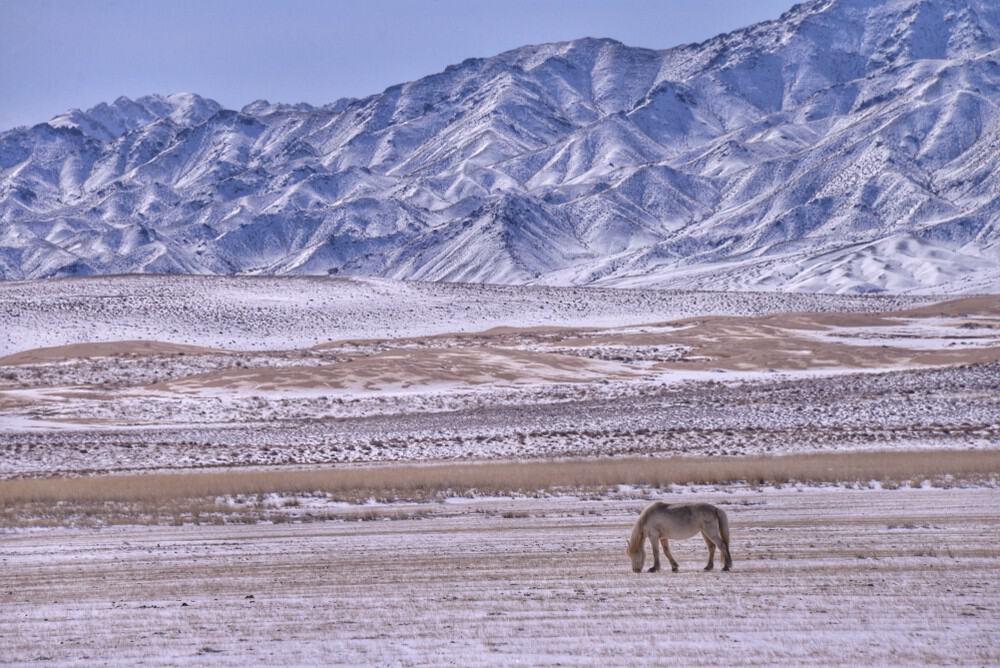
Cold deserts are located in higher latitudes or at high elevations. They defy the common perception of deserts as hot, barren lands. The Gobi Desert in Asia and the Great Basin Desert in the United States exemplify cold deserts, where snow rather than rain is the main form of precipitation. These deserts experience severe temperature variations between seasons, with cold winters and hot summers. Vegetation is usually more robust than in hot deserts, with hardy shrubs and grasses that can tolerate freezing temperatures.
The World’s Largest Deserts
1. Antarctic Polar Desert
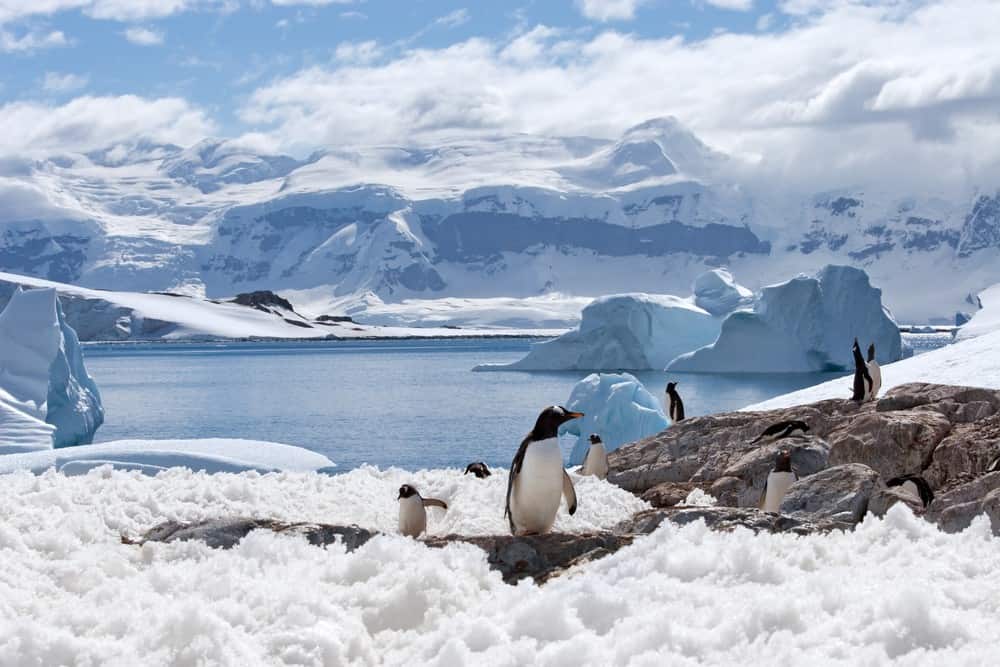
- Location: Antarctica
- Size: 5.5 million square miles (14.2 million square kilometers)
The Antarctic Polar Desert is the largest desert in the world. This might come as a surprise, given the continent’s massive ice sheets contain about 90% of the world’s fresh water. However, in this cold desert, precipitation is scant, averaging just 6.5 inches (16 cm) along coastal areas.
The reason Antarctica holds so much ice lies in its cold temperatures. In fact, the white continent is the coldest place on Earth, with temperatures dropping as low as -112°F (-80°C) in winter. At these temperatures, the small amout of precipitation that falls does not evaporate or melt, but accumulates over thousands of years.
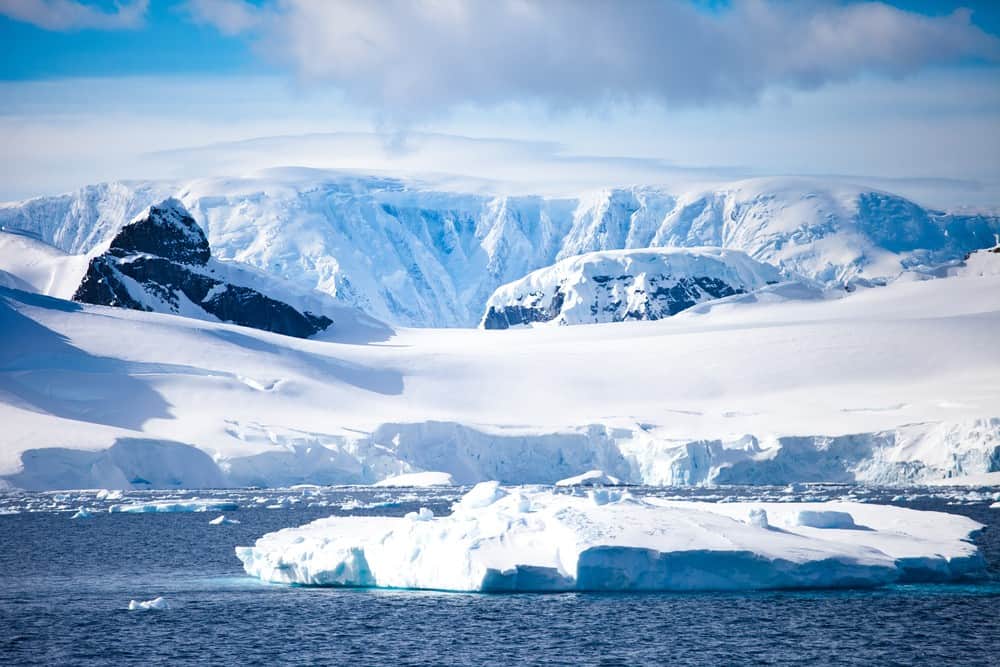
The Antarctic Polar Desert covers the entirety of the continent. The landscape is predominantly ice, stretching as far as the eye can see. The Antarctic Ice Sheet is the largest single mass of ice on the planet, covering an area of around 5.4 million square miles (14 million square kilometers) and averaging 1.2 miles (1.9 kilometers) in thickness.
This desert hosts resilient forms of life, such as penguins, whales, and seals. You can see the animals of Antarctica here.
2. Arctic Polar Desert
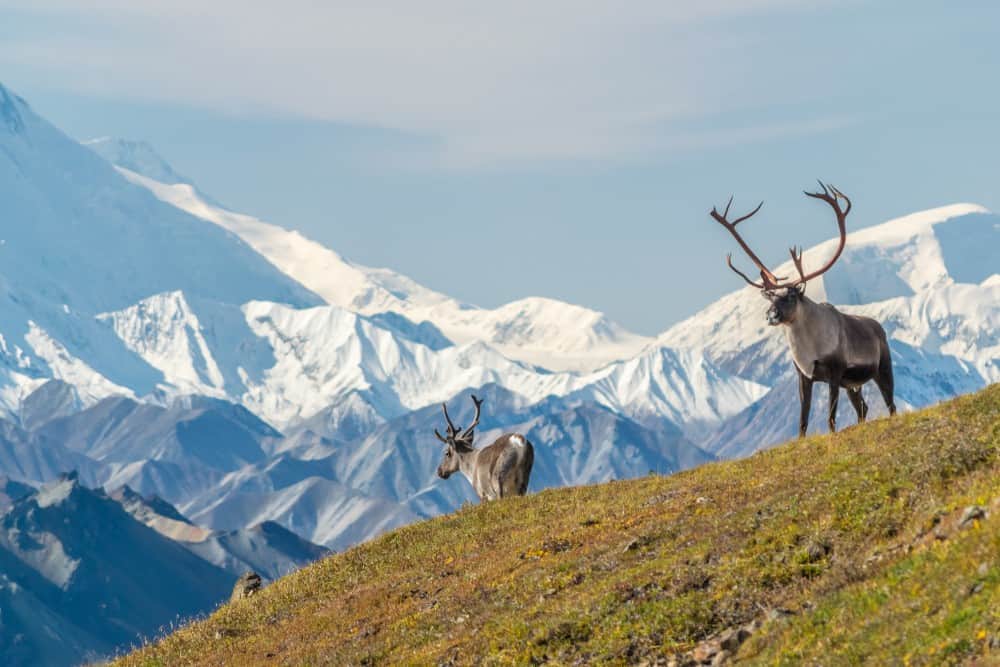
- Location: Parts of Canada, Russia, Greenland, Norway, and more
- Size: 5.4 million suare miles (13.9 million square kilometers)
The Arctic Polar Desert is the second largest desert and only other polar desert in the world. It covers the northernmost regions of our planet. It is a vast, cold wilderness that extends across parts of Canada, Greenland (Denmark), Norway, Sweden, Finland, Iceland, Russia, and the United States (Alaska).
Similar to Antarctica, this polar desert has minimal precipitation and extensive permafrost. The climate is severe, with long, cold winters and short, cool summers. The landscape is diverse, ranging from sea ice to tundra.
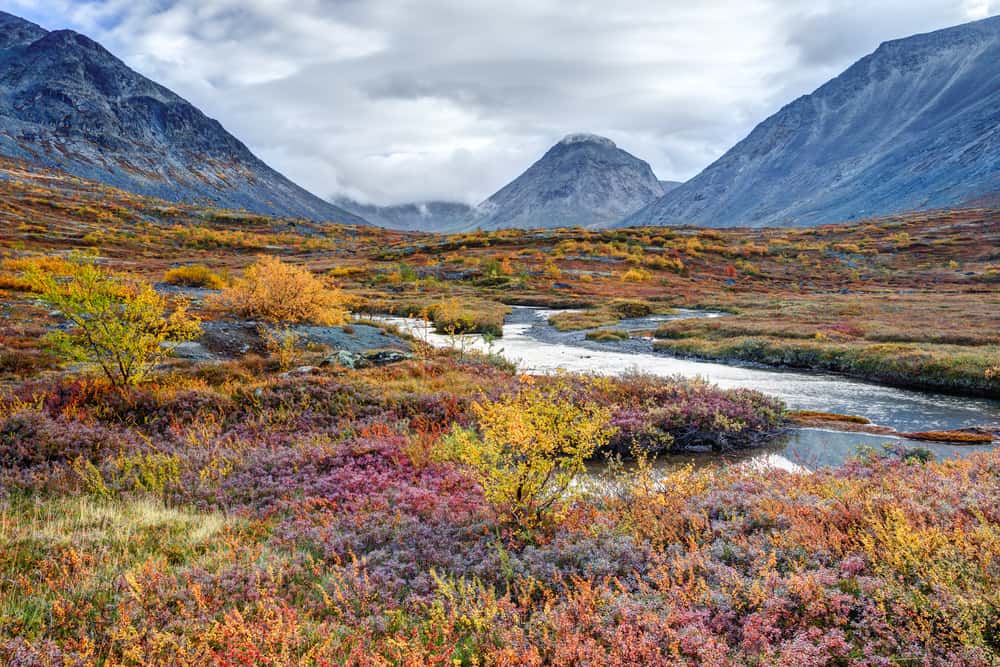
In the brief summer, when the upper layers of permafrost thaw, the tundra blooms with hardy species of mosses, grasses, and small shrubs, offering a burst of life in the stark landscape. However, trees are unable to grow here.
The Arctic supports a diverse range of wildlife, including polar bears, Arctic foxes, and caribou, along with various species of seals and whales along its coasts. You can see the animals of the Arctic here.
3. Sahara Desert
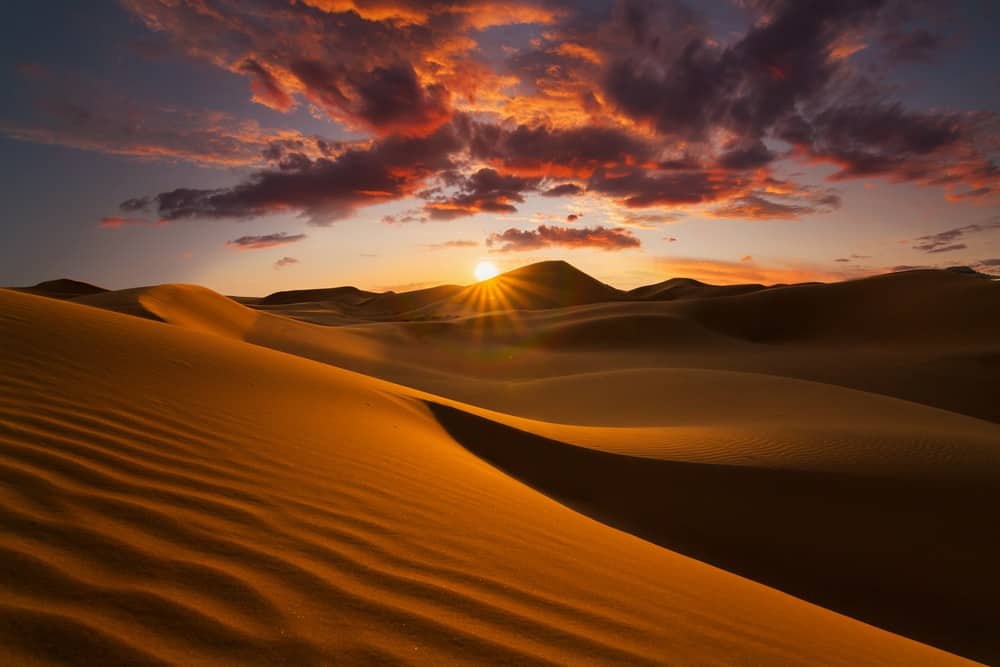
- Location: Northern Africa
- Size: 3.6 million square miles (9.2 million square kilometers)
The Sahara is the third-largest desert and the world’s largest hot desert. It covers large parts of North Africa, touching Algeria, Egypt, Libya, Mali, Mauritania, Morocco, Niger, Western Sahara, Sudan, and Tunisia. Its name is derived from the Arabic word for desert, “ṣaḥrāʾ”.
Some of the hottest temperatures ever recorded on the planet (136°F/58°C) belong to the Sahara Desert. In the hottest months, daytime temperatures can soar above 122°F (50°C), while at night, they can plummet to near freezing.
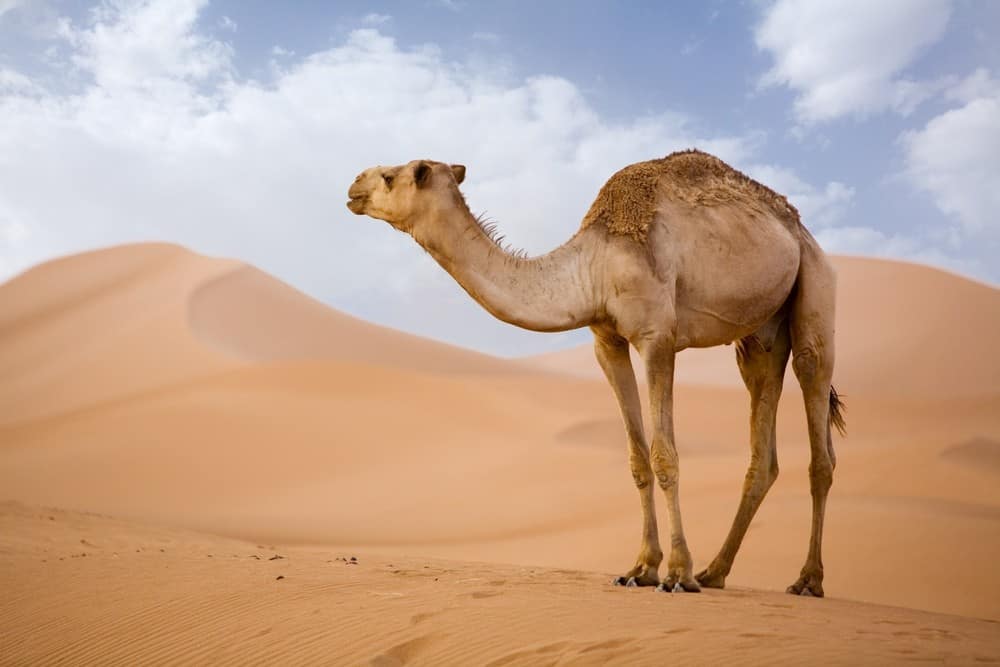
This vast region is not uniformly barren. Sand dunes cover about 25% of the Sahara, with the balance made up of rocky plateaus, gravel plains, dry valleys, and even the occasional mountain range. The Sahara also hosts the world’s largest hot desert wind, the Sirocco, which can whip up sandstorms.
Against the odds, life flourishes in the Sahara. Species like the Saharan silver ant can withstand the highest temperatures of any terrestrial animal in the world. The desert is also home to the fennec fox and the dromedary camel. Vegetation is sparse but resilient, with plants like the date palm thriving near oases.
4. Arabian Desert
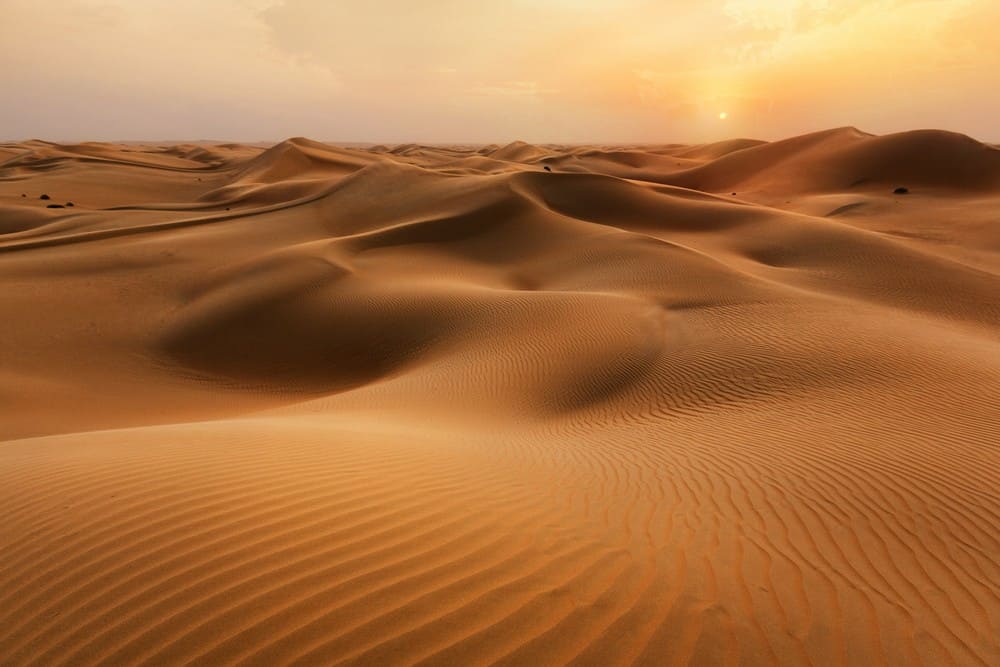
- Location: Arabian Peninsula
- Size: 890,000 square miles (2.3 million square kilometers)
The Arabian Desert is an expanse of unyielding terrain that stretches across the Arabian Peninsula. Its boundaries encompass parts of Saudi Arabia, Jordan, Iraq, Kuwait, Qatar, the United Arab Emirates, Oman, and Yemen, rendering it a significant geographical feature in the Middle East.
This desert has a subtropical climate that is characterized by extreme heat. The heart of the the desert, known as the Rub’ al Khali or Empty Quarter, is one of the largest continuous sand deserts in the world. Some of its highest dunes reach heights of 820 feet (250 meters). This desert has shaped the culture of the Bedouin tribes and their nomadic existence.
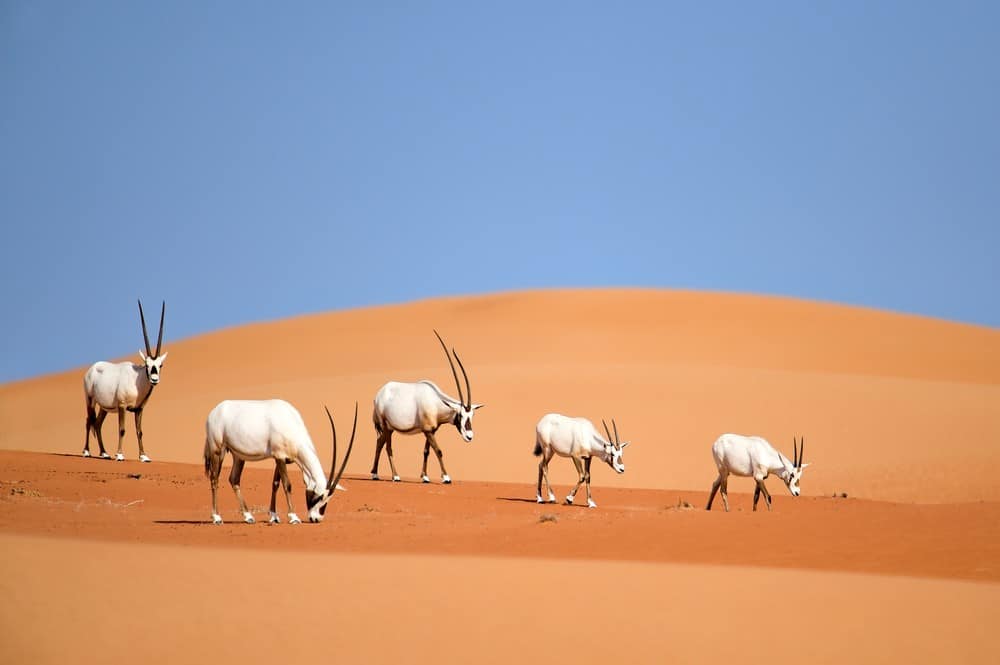
The Arabian oryx, once considered extinct in the wild, has been successfully reintroduced and now roams freely in protected areas. The desert is also home to the Arabian sand gazelle and the Arabian wolf. Plant life includes acacia trees and various types of grasses.
5. Gobi Desert
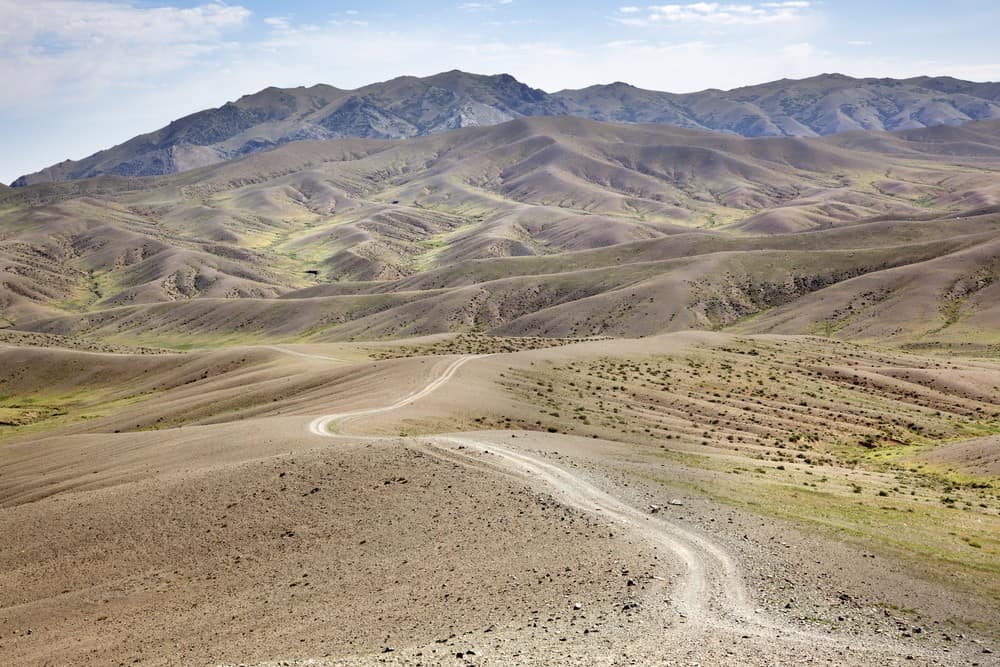
- Location: Northern China and Southern Mongolia
- Size: 502,000 square miles (1.3 million square kilometers)
The Gobi is Asia’s largest desert, stretching across northern China and southern Mongolia. This cold desert is marked by rugged terrain and significant temperature swings. Unlike the stereotypical sandy desert, the Gobi features rocky outcrops, gravel plains, and occasional green oases.
Historically, the Gobi has been a crossroads of civilization. Its role in the Silk Road facilitated the exchange of goods, ideas, and cultures, shaping the course of human history.
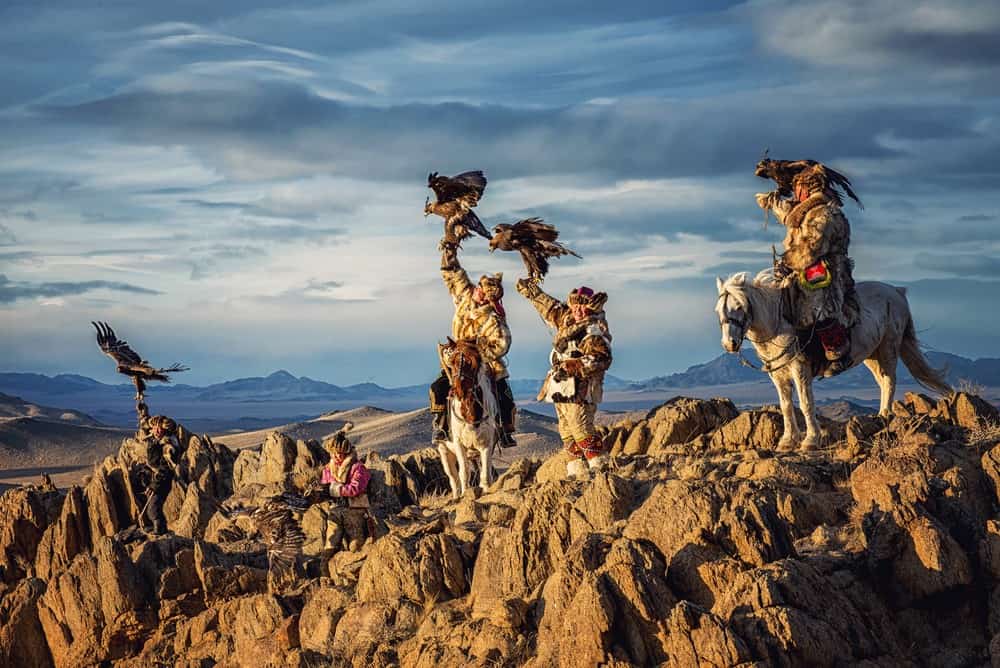
The human population in the Gobi Desert primarily consists of nomadic herders in Mongolia and settled communities in China. The Mongolian nomads are known for their traditional lifestyle, moving with their livestock—camels, goats, sheep, horses, and sometimes cattle—in search of grazing grounds and water. This way of life has been practiced for millennia and is deeply rooted in Mongolian culture and history.
The desert’s ecosystem supports rare species such as the Bactrian camel, snow leopard, and the Gobi bear. Saxaul trees, capable of storing water in their bark, are found here.
6. Kalahari Desert
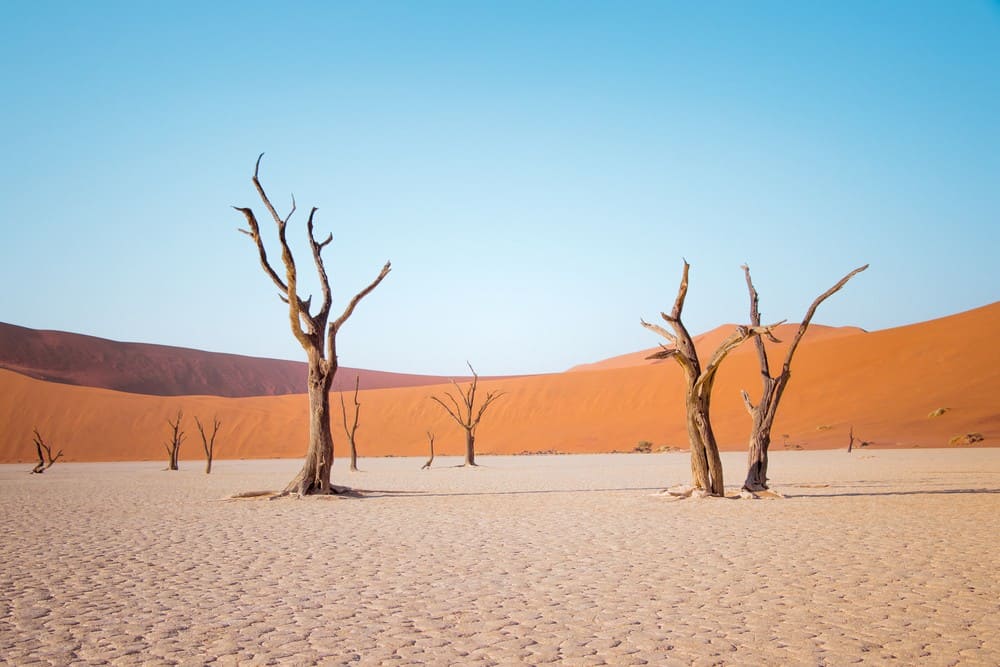
- Location: Botswana, Namibia, and South Africa
- Size: 360,000 square miles (930,000 square kilometers)
The Kalahari Desert, straddling Botswana, Namibia, and South Africa, redefines the essence of a desert. Far from being a barren wasteland, the Kalahari showcases vast expanses of sand, but also areas teeming with life. It receives more rainfall than most deserts—up to 20 inches (50 cm) annually in certain areas—and can support a rich variety of life. Its landscapes range from sand dunes to dense bushveld.
A notable feature of the Kalahari is Deception Valley, which owes its name to its deceptive appearance. From a distance, it looks like it has water, but it’s actually a dry riverbed. This phenomenon is a mirage, which is quite common in the desert due to the heated air near the surface.
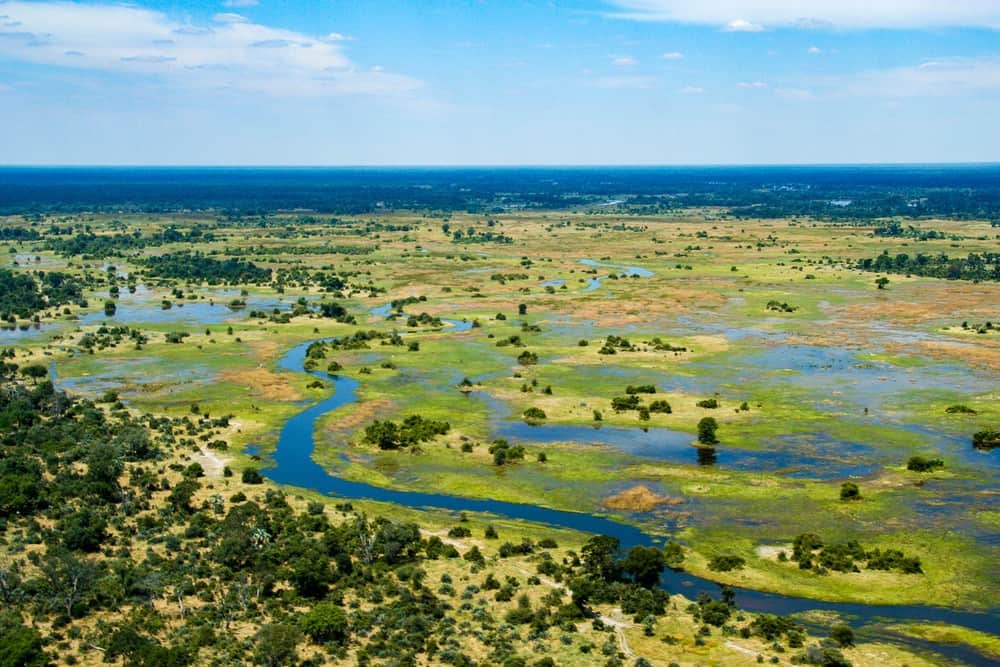
The Kalahari is also known for the Okavango Delta, an inland delta that is one of the most remarkable natural landscapes in the world. This inland delta is unique because, unlike most river deltas that lead to the sea, the Okavango River empties onto open land, flooding the savannah and creating a wetland ecosystem. Large populations of some of Africa’s most notable wildlife, including African elephants, lions, leopards, rhinoceroses, and Cape buffalo exist here.
7. Patagonian Desert
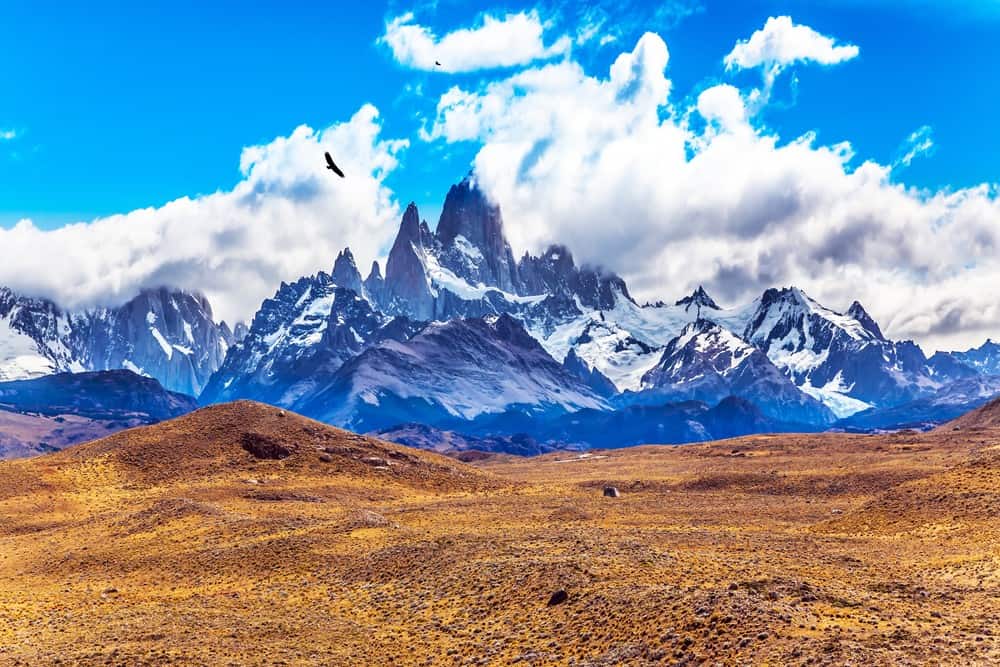
- Location: Southern Argentina and parts of Chile
- Size: 260,000 square miles (670,000 square kilometers)
The Patagonian Desert, or Patagonian Steppe, is a cold, semi-arid biome with a stark and windswept landscape. It is located at the southern end of South America, across Argentina and touches parts of Chile. Flanked by the Andes to the west and the Atlantic Ocean to the east, it features a mix of shrubs, grasslands, and rocky areas.
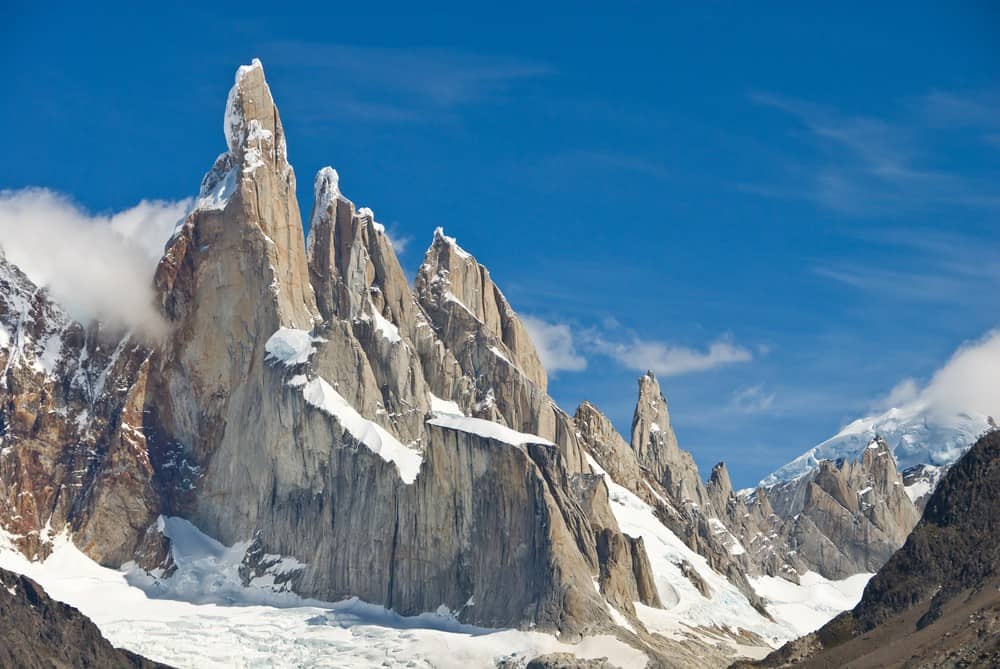
The desert itself is a plateau, interspersed with valleys and canyons that are a result of ancient volcanic activity. The climate is very dry and cold with snowfall during the winter and frosts nearly year-round. The iconic Fitz Roy massif, a striking formation of towering granite peaks, and the Cerro Torre, a distinctive needle-like spire, are located here.
The Patagonian Desert is home to the guanaco, a wild relative of the llama, the Patagonian mara, a large rodent unique to the region, and the Andean condor, one of the world’s largest flying birds.
8. Great Victoria Desert
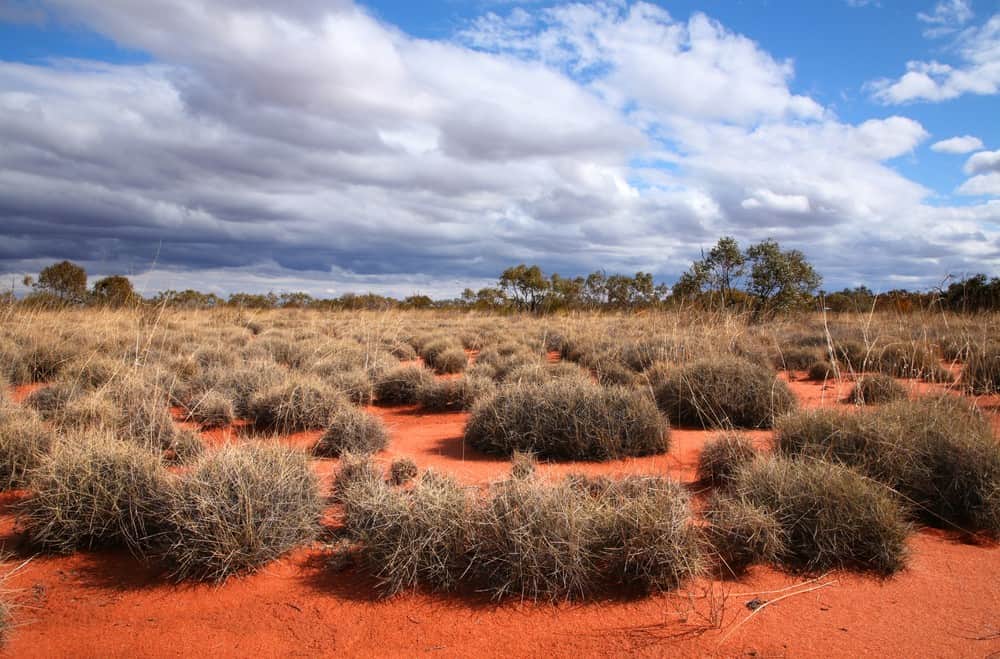
- Location: Southern and Western Australia
- Size: 250,000 square miles (647,000 square kilometers)
Australia’s largest desert is the Great Victoria, named after Queen Victoria. It is a sprawling region of sand dunes, grasslands, and salt lakes. This desert is rich in minerals, including large deposits of iron ore, gold, and nickel. However, mining activities are carefully regulated to minimize environmental impact.
The Great Victoria Desert is one of the most remote and least densely populated areas in Australia. It is inhabited by several Indigenous Australian communities who have been connected to this land for tens of thousands of years. These communities live in small, remote settlements and outstations and maintain their cultural practices, languages, and laws.
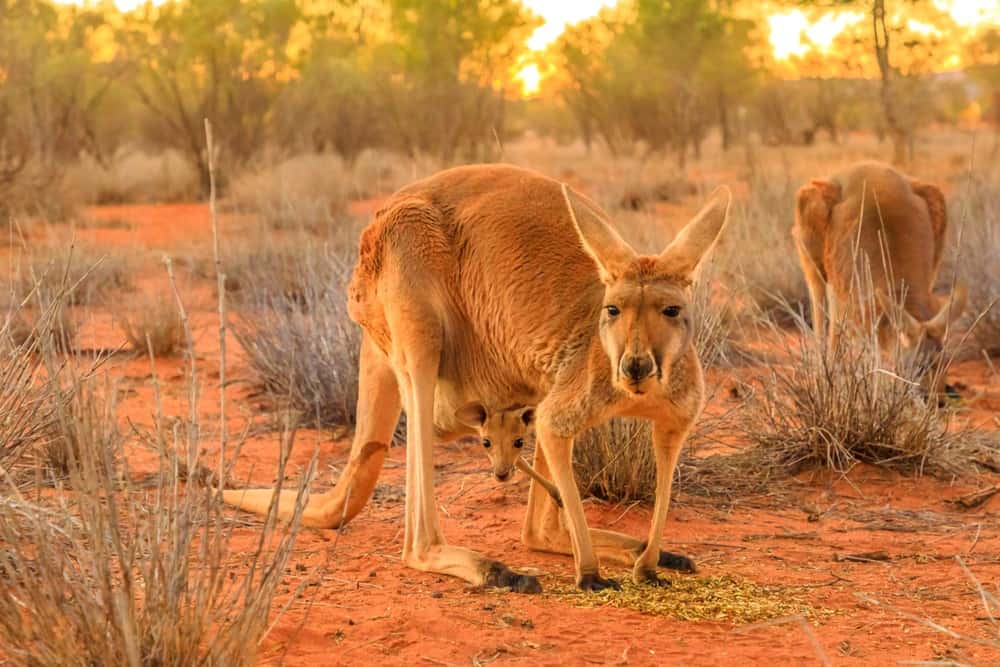
Mammalian life in the desert includes the red kangaroo, the dingo, and several small marsupials like the bilby. A variety of reptiles, such as the thorny devil and great desert skink. Vegetation includes hardy shrubs, acacia, and the distinctive spinifex grasses.
9. Great Basin Desert
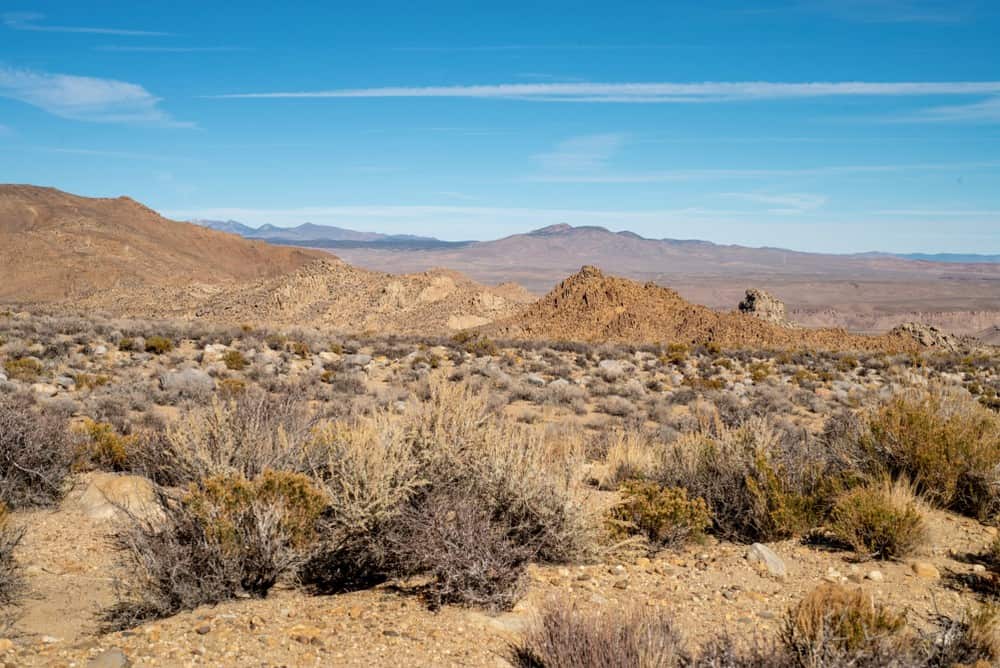
- Location: Western United States
- Size: 190,000 square miles (492,000 square kilometers)
The Great Basin Desert is the largest desert in the USA. It spans across much of Nevada, as well as portions of Utah, Oregon, Idaho, and California. This desert is part of the Great Basin, a hydrographic region where waters do not find their way to the ocean but are instead lost to evaporation or seepage. It consists of narrow mountain ranges separated by flat valleys or basins, a result of geological forces stretching the Earth’s crust.
The Great Basin Desert experiences a cold desert climate, with hot summers and cold winters. Precipitation is scarce and unevenly distributed, primarily falling as snow during the colder months.
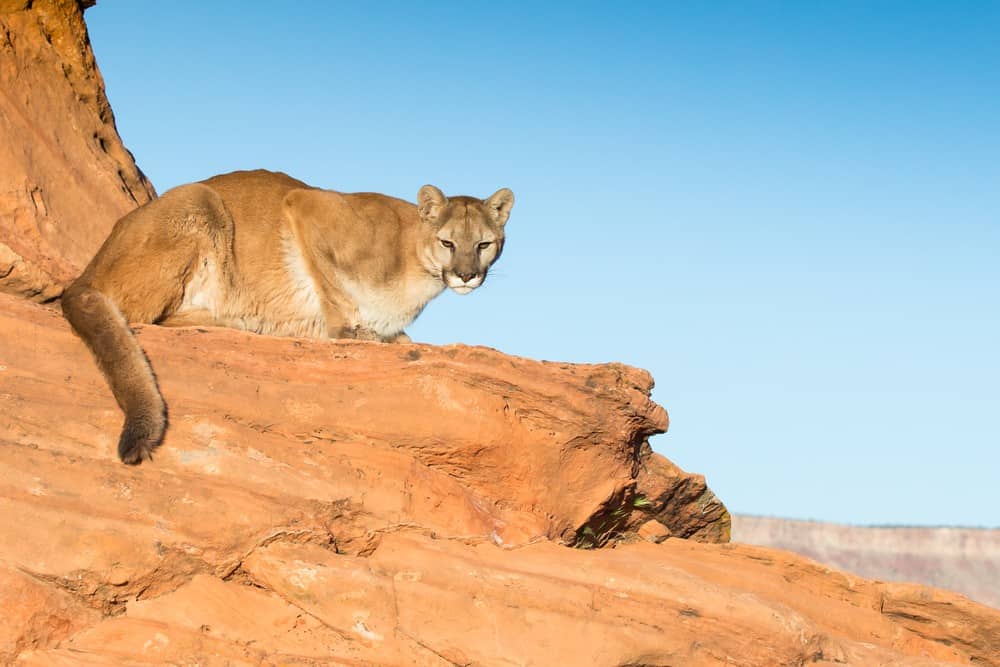
Sagebrush is the dominant vegetation, covering vast areas and providing essential habitat for wildlife. Notable species include the pronghorn, mule deer, bighorn sheep, and mountain lions. Ancient bristlecone pines, some of the oldest living organisms on Earth, also thrive here.
10. Syrian Desert
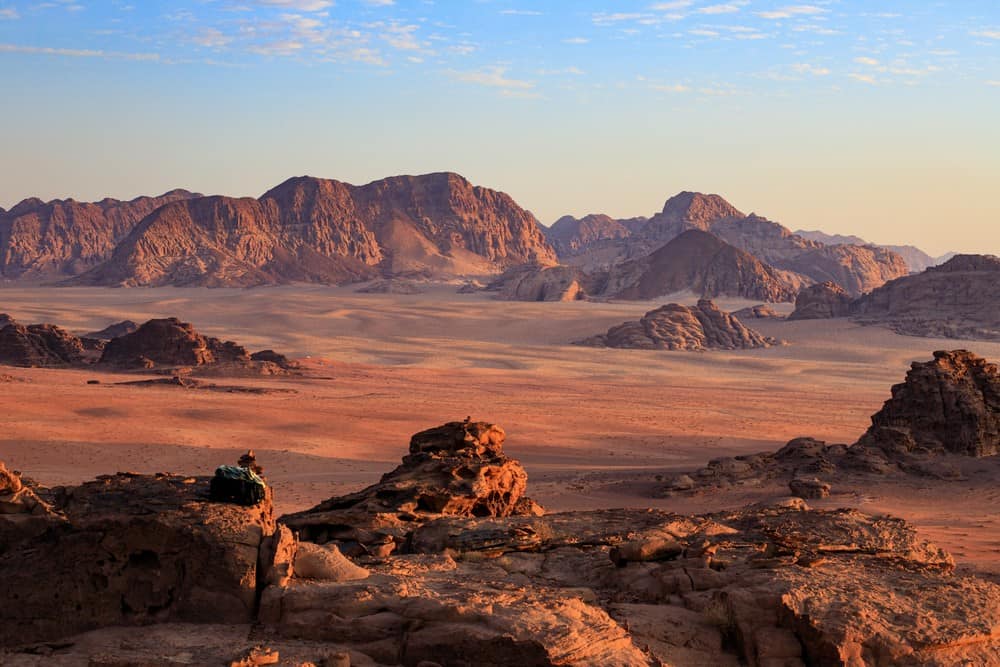
- Location: Syria, Jordan, Iraq, and Saudi Arabia
- Size: 180,000 square miles (460,000 square kilometers)
The Syrian Desert lies across parts of Syria, Jordan, Iraq, and Saudi Arabia. The terrain is marked by its vastness and variety, comprised predominantly of rocky plains, gravel fields, and sparse sand dunes. The desert’s topography is punctuated by occasional mountain ranges and extinct volcanic cones that rise against the flatlands. Interspersed within this arid expanse are wadis—dry riverbeds that seasonally fill with water, breathing life into the desert.
Summers are blisteringly hot, with daytime temperatures often sitting above 104°F (40°C). Winter, in contrast, has temperatures that can fall to near freezing at night. Rainfall is sparse and unpredictable, often arriving in brief, intense showers that barely penetrate the sun-baked ground.

The Bedouin people are synonymous with the Syrian Desert and other parts of the Middle East, known for their nomadic lifestyle. Traditionally, the Bedouin moved through the desert in search of grazing for their livestock, living in tents woven from goat or camel hair. This mobility was improtant for surviving in a landscape where resources are fleeting and scarce.
The animal inhabitants of the Syrian Desert include the Arabian oryx and the swift sand cat. A variety of reptiles like the desert monitor lizard and the venomous deathstalker scorpion are found here.




















































